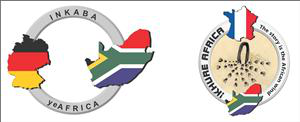Speaker
Mr
Philemon Tsela
(University of Pretoria)
Description
Currently Hartebeesthoek Radio Astronomy Observatory (HartRAO) in South Africa is developing a Satellite/Lunar Laser Ranger (S/LLR) based on a 1 metre aperture telescope. This is done in collaboration with the National Aeronautics and Space Administration (NASA) and the Observatoire de la Côte d'Azur (OCA). The S/LLR is required to make ranging observations with sub-centimetre level accuracy. Various components of the S/LLR are currently being integrated, coupled with the development of operating models for the telescope. This includes, for example, the pointing and thermal dynamic models which depend on the temperature variations on the telescope. In particular, this study aims to develop a model based on thermal measurements of the structure, as thermal variations of the structure affect the pointing of the telescope. Excellent pointing will increase the chance being on-target with the retroreflectors located on the lunar surface.
As the first step, we present simulation results through the use of transient heat conduction on the thermal behaviour of the telescope, in particular the tube and primary mirror. The results reveal a temperature gradient of about 1 °C which means that, both the tube and especially the mirror may respond very slowly to ambient temperatures (T∞). Furthermore, the simulation produced a similar temperature gradient on both components for rapidly changing ambient temperatures with a range of 13 °C. These findings provide an indication of: i) understanding the thermal behaviour of the telescope’s critical components with respect to the changing thermal environment, ii) guiding the strategic location of the thermal sensors on the telescope, and iii) options for developing a thermal dynamic model which would correct for thermal variations that affect the pointing of the telescope.
Primary author
Mr
Philemon Tsela
(University of Pretoria)
Co-authors
Mr
Bongani Lucas Ngcobo
(University of Pretoria)
Prof.
Ludwig Combrinck
(HartRAO)
Mr
Roelf C Botha
(HartRAO)

